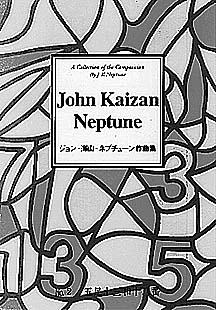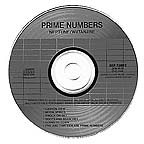| John Kaizan Neptune Shakuhachi Sheet Music |  |
| John Kaizan Neptune Shakuhachi Sheet Music |  |
I have recorded more than 100 originalcompositions for shakuhachi. All of the tunes I have recordedare available in Western music.
 | In addition, all of the works on the CD PRIME NUMBERS, are available in traditional scores for shakuhachi, koto, bass koto, and shamisen, published by Katei Ongaku Shuppan. In fact, parts of the score for Roots and Branches can be seen on this web-site in both Japanese and Western Music. |
| A prime number is a whole number that cannot be divided without a remainder by any whole number except itself and one. Of course prime also means first in rank or importance, original, fundamental. It just so happens that the traditional Japanese instruments used here all contain prime numbers: 3-stringed shamisen, 5-holed shakuhachi, 13-stringed koto, and 17-stringed bass koto.
But one thing you won't find is improvisation. This is the first time in more than fifteen years of recording my own music that I've done a whole project with no improvisation. Yasuko Watanabe and I specifically composed our solos for Canyon View and Moon Spirits in the hope that other musicians not familiar with improvisation (which is not part of the Japanese tradition) might be more comfortable performing this music. All of the scores are available in Japanese or Western notation. This is not to say you won't hear any freedom on this recording. The Japanese instruments lend themselves to a broad spectrum of personal expressions and tone colors. | |
CANYON VIEW
A work commissioned by Yasuko Watanabeand her students. Their request: write a tune using a pentatonic(five-tone) scale, the idea being that this would be easier toimprovise with as the familiar traditional Japanese music is alsopentatonic. I used a different pentatonic scale for each of thethree movements, each one has only one note change half-step.I was still searching for a title when I had a chance to visitthe Grand Canyon (Arizona, U.S.A.): each view point is quite uniquethough separated by a short distance, and I thought it was similarto the piece I wrote -- it's all pentatonic, but go a shortdistance and it's a completely different view. PN-1
MOON SPIRITS
This tune was specifically written for this recording. The threekoto parts work well with fairly distinct ensemble function --lead/solo koto, rhythm/harmony koto, and bass koto. A bass 2.4shakuhachi and a standard 1.8 shakuhachi are both used. PN-2
ROOTS AND BRANCHES
The first movement is from shakuhachi "roots": traditionalhonkyoku - Japanese scale, free-rhythm, importance of space, deliberatelysimplified. The second movement has European "roots",specifically, music inspired by 16th century counterpoint. HermannBattenberg introduced me to some beautiful choir recordings ofworks by Palestrina and I thought music like that would soundgreat on shakuhachi too. The last movement features a more rhythmic(American?) branch with some Japanese folk scales thrown in forflavor. Scored for 1.6, 1.8, 2.1 and 2.4 shakuhachi. I recordedall four parts. This was quite an engineering feat consideringwe had only two 2-track digital recorders and still managed torecord everything in stereo. PN-3
GOING TO TOWN
This tune is the musical story of a person traveling from thecountry to a town for the first time. It starts with a prayerfor a safe journey: free-rhythm solo shakuhachi using the countryfolk scale (yosempo). Traveling along at a nice walking tempo,the tune continues using the folk scale. When contact is madewith the city it has a tremendous, percussive impact on the traveler.This is followed by a slow, somewhat somber melody using the cityscale (insempo). Later, after appreciating the rich variety ofthings happening, the country person is now able to enjoy thefast pace and international flavor: a faster tempo and other tonesbesides the Japanese scales are used. PN-4
FIVE AND THIRTEENARE PRIME NUMBERS
This is the first duet that I wrote for koto and shakuhachi. Musicalinfluences are from Japan, India, America (blues) and Africa.How did I come up with the title? I thought it was more interestingthan "Duet For Koto and Shakuhachi Number 1". PN-5